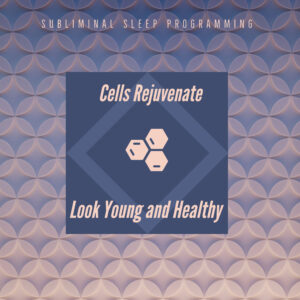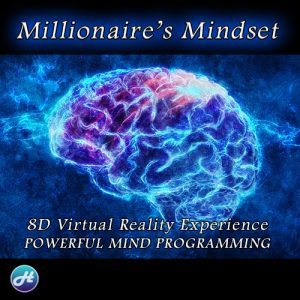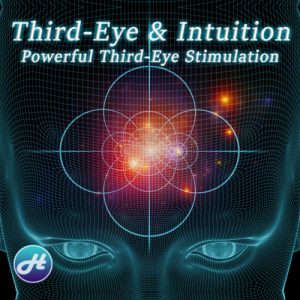Illustration: Angelica Alzona(Gizmodo)Giz Asks Giz AsksIn this Gizmodo series, we ask issues about whatever and get the answer from a variety of experts.Reality has plenty of exit-hatches: strong drugs, streamed television, specific corners of social media networks. However the most immersive reality-dissolver might be lucid dreaming, where the dreamer recognizes they’re dreaming and continues to enhance their dreamscape per their own requirements. A small disreputableness hang on to the phenomenon– it seems like a schoolyard fiction, the kind of thing a kid would make up to impress his buddies. However there are thousands who claim to experience them often, and numerous guides online professing to teach you how to attain them. So is lucid dreaming genuine? And– if it is– what’s the science behind it? To find out, for today’s Giz Asks we connected to a variety of experts in the interrelated fields of sleeping and dreaming.Jessica Payne Partner Teacher, Psychology, University of Arizona, whose research concentrates on how sleep and stress affect human memory and mental
function It definitely is real, in spite of the truth that it sounds insane– like some kind of mysterious finding that might never ever be scientifically reproduced. However in fact, there’s authentic empirical work in support of lucid
dreaming. There’s a misconception that it’s unusual, or really challenging to achieve. We in fact comprehend that a number of individuals can discover to do it. There’s a lot of proof stemming from my lab and others that the sleeping brain will selectively process directions or memories that you provide it prior to you go to sleep. So for instance if you’re studying for a test, amongst the very best things you can do is read your notes one last time before you go to sleep, due to the fact that you’re telling the sleeping brain what to focus on. This also works if you’re attempting to solve an issue, or establish an insight or a creative service. In my research study studies, a minimum of 80%of individuals who go to bed with the intent of remembering their dreams for three weeks will begin reporting exceptionally dynamic dreaming. Often these are people who never ever remembered their dreams formerly, who were encouraged they don’t dream. Lucid dreaming is more difficult than that, nevertheless you can teach individuals to begin trying to wind up understanding things that don’t quite make good sense. One typical guideline is look down at your hands: do you have the right variety of fingers? Are they in the ideal area? If there’s a clock in your dream,
is it informing a reasonable time? Are the hands in the very best place? Generally, when individuals are finding out to end up being lucid they’ll have a fast minute of lucidity and then wake up. Gradually, if you keep practicing, a good deal of people will just kept better at it. There’s a male called Stephen LaBarge, a Stanford psychologist, who was up previously ahead of his time on this phenomenon. He developed some of the most convincing proof years ago, and no one really believed it. Perhaps some individuals just didn’t think it was necessary. He ‘d teach individuals ahead of time to signal with their eyes– left-right-left, or other series– to mark when they ‘d began lucid dreaming. When you’re lucid dreaming, you’re definitely still asleep– nevertheless”sleep,”as a term, is kind of a misnomer. Sleep is a collection of vastly different brain-states. And late night or early morning Rapid-eye-movement sleep– which is when lucid dreaming happens– looks a lot more like wakefulness in a great deal of methods than it simulates deep sleep.
But there’s truly brand-new, intriguing and– I have to state– preliminary evidence that what’s occurring in lucid dreaming is that individuals are triggering a part of their brain. There belongs of your brain called the prefrontal cortex, and throughout Rapid Eye Motion sleep it’s absolutely closed down– it’s closed down. It’s the part of your brain that informs you that you can’t
fly across your room– which is why, in Rapid-eye-movement sleep dreams, you can fly without questioning how ridiculous that is. You do not realize that that’s strange till you get up. And there’s initial evidence that what might be going on throughout Rapid-eye-movement sleep lucid dreaming is that you have really in some way reactivated that prefrontal cortex, which allows you to have insight into your dreams, and (in the most extreme version of lucidity )control.” When you’re lucid dreaming, you’re definitely still asleep– however”sleep,” as a term, is kind of a misnomer. Sleep is a collection of significantly different brain-states. And late night or morning Rapid-eye-movement sleep– which is when lucid dreaming occurs– looks a lot more like wakefulness in a good deal of techniques than it does like deep sleep.”Tore Nielsen Teacher of Psychology and Director of
dreaming. There’s a misconception that it’s unusual, or really challenging to achieve. We in fact comprehend that a number of individuals can discover to do it. There’s a lot of proof stemming from my lab and others that the sleeping brain will selectively process directions or memories that you provide it prior to you go to sleep. So for instance if you’re studying for a test, amongst the very best things you can do is read your notes one last time before you go to sleep, due to the fact that you’re telling the sleeping brain what to focus on. This also works if you’re attempting to solve an issue, or establish an insight or a creative service. In my research study studies, a minimum of 80%of individuals who go to bed with the intent of remembering their dreams for three weeks will begin reporting exceptionally dynamic dreaming. Often these are people who never ever remembered their dreams formerly, who were encouraged they don’t dream. Lucid dreaming is more difficult than that, nevertheless you can teach individuals to begin trying to wind up understanding things that don’t quite make good sense. One typical guideline is look down at your hands: do you have the right variety of fingers? Are they in the ideal area? If there’s a clock in your dream,
is it informing a reasonable time? Are the hands in the very best place? Generally, when individuals are finding out to end up being lucid they’ll have a fast minute of lucidity and then wake up. Gradually, if you keep practicing, a good deal of people will just kept better at it. There’s a male called Stephen LaBarge, a Stanford psychologist, who was up previously ahead of his time on this phenomenon. He developed some of the most convincing proof years ago, and no one really believed it. Perhaps some individuals just didn’t think it was necessary. He ‘d teach individuals ahead of time to signal with their eyes– left-right-left, or other series– to mark when they ‘d began lucid dreaming. When you’re lucid dreaming, you’re definitely still asleep– nevertheless”sleep,”as a term, is kind of a misnomer. Sleep is a collection of vastly different brain-states. And late night or early morning Rapid-eye-movement sleep– which is when lucid dreaming happens– looks a lot more like wakefulness in a great deal of methods than it simulates deep sleep.
But there’s truly brand-new, intriguing and– I have to state– preliminary evidence that what’s occurring in lucid dreaming is that individuals are triggering a part of their brain. There belongs of your brain called the prefrontal cortex, and throughout Rapid Eye Motion sleep it’s absolutely closed down– it’s closed down. It’s the part of your brain that informs you that you can’t
fly across your room– which is why, in Rapid-eye-movement sleep dreams, you can fly without questioning how ridiculous that is. You do not realize that that’s strange till you get up. And there’s initial evidence that what might be going on throughout Rapid-eye-movement sleep lucid dreaming is that you have really in some way reactivated that prefrontal cortex, which allows you to have insight into your dreams, and (in the most extreme version of lucidity )control.” When you’re lucid dreaming, you’re definitely still asleep– however”sleep,” as a term, is kind of a misnomer. Sleep is a collection of significantly different brain-states. And late night or morning Rapid-eye-movement sleep– which is when lucid dreaming occurs– looks a lot more like wakefulness in a good deal of techniques than it does like deep sleep.”Tore Nielsen Teacher of Psychology and Director of
the Dream & Headache Lab at Universite de Montreal This issue is somewhat unpredictable and could be comprehended in 2 senses: 1) does the phenomenon of lucid dreaming actually exist, ie., are some individuals truly able to realise that they are dreaming while they continue dreaming? And 2)are the extremely vivid sensory impressions one has while lucid dreaming some kind of an alternate’truth’? The second sense of the issue discuss problems of the supreme nature of fact and of human belief systems in such truth(e.g., animism). These concerns have actually not
been attended to definitively by science and will not be addressed much more by me. The very first sense of the issue, nevertheless, is basic for me to respond to, not just due to the truth that I am a dream scientist familiarized with the important research study on lucid dreaming, but due to the reality that I have actually had lots of lucid dreams myself. To put it simply, I have actually been there and done that– not as soon as however lot of times, so I am convinced beyond a doubt that the phenomenon in fact exists. Nevertheless, since vociferous claims are not the like empirical evidence, it is essential to ask: what is the research study evidence that supports this claim? There has actually been a great deal of evidence readily available considered that
the 1960s– too much to sum up all of it here. Nevertheless the most engaging studies– and these have been replicated by various research groups– rest on a weird function of numerous lucid dreams: that people when dreaming lucidly have the ability to willingly manage a few of their muscles. While it is progressively typical understanding that REM sleep, which is when fantastic dreaming– including lucid dreaming– normally happens, is identified by the paralysis of voluntary muscles( so-called muscle atonia), it is less widely known that some muscle groups are
simply partially or minimally affected by this paralysis system. Eye muscles are the prime example; for as-yet unidentified aspects, eye muscles continue to work no matter muscle atonia and are accountable for the infamous’rapid-eye-movement sleep’from which REM sleep gets its name. Due to the truth that of this exception, when a dreamer slips into a lucid dream, really typically they have the ability to make voluntary eye movements while the dream continues. This reality has in fact opened the door to what is referred to as’eye-movement signaling’from within a lucid dream. When going into a lucid dream while sleeping in a laboratory, individuals can perform pre-arranged eye motion series, such as a series of left-right-left-right motions, and this motion sequence will appear on the laboratory polysomnograph as a clearly recognizable set of line tracings that are different from the rapid eye movements of Rapid Eye Movement. Significantly, these eye-movement signals take place although the polysomnograph indicates that Rapid Eye Movement, and its accompanying dream, continue. People can likewise repeat eye-movement signals at tactical times throughout their lucid dream, for example, right before and just after performing a prepared experiment, like counting to 10 or walking 10 actions. These dream habits can then be compared objectively versus equivalent habits performed throughout the waking state. Contrasts reveal that the durations of various dream habits take about the really exact same time to perform as waking state habits, although they may be a bit slower often (this does not truly support the claim in the movie Production that time is considerably slowed in lucid dreams ). So, in sum, the eye-movement signaling method has actually allowed dream researchers to reveal not just that lucid dreaming is authentic, as numerous lucid
dreamers have actually declared, however that the habits actively carried out in these dreams unfold in near-real time like they would in wakefulness. “When entering a lucid dream while oversleeping a lab, people can carry out pre-arranged eye movement series, such as a series of left-right-left-right motions, and this motion series will appear on the lab polysomnograph as a plainly recognizable set of line tracings that are various from the rapid-eye-movement sleep of Rapid-eye-movement sleep. Significantly, these eye-movement signals happen despite the fact that the polysomnograph recommends that Rapid Eye Movement, and its accompanying dream
, continue.”Ina Djonlagic Assistant Teacher, Neurology, Harvard Medical School, whose research study concentrates on better comprehending the plastic brain processes throughout sleep, among other things The short response is, yes, it’s real. Going by lucid dreaming’s wider definition– i.e., realising that you’re
dreaming within the dream itself– I think many people have had that experience. And there are some practices that individuals utilize to train themselves to lucid dream-not just to increase their awareness of dreaming within a dream, but also to get some control over the dream content. I think where lucid dreaming can become helpful is when it comes to headaches. As a clinician, I’ve seen a number of customers who have really successfully trained themselves to lucid dream to assist handle and remove their problems and there are reports inthe literature that confirm this phenomenon. That said, it’s unclear that practicing it continually would be advantageous. Due to the reality that lucid dreamers have features of waking and sleeping incorporated, it stays unclear how this affects the overall quality of sleep and subsequent everyday efficiency. Nobody has actually formally studied this-in general, research study studies on dreaming are really tough to carry out in a clinical and regulated method– this is due to the reality that the dream experience is not transparent to the scientist and therefore they depend upon the research study individual recounting their dream which primarily consists of pieces and is extremely subjective.”… it’s not clear that practicing it constantly would be
useful. Given that lucid dreamers have functions of waking and sleeping integrated, it stays uncertain how this impacts the general quality of sleep and subsequent daily performance.”Deirdre Leigh Barrett Dream researcher at Harvard and the author of The Committee of Sleep Lucid dreams are real in the sense of being real dreams; they happen mainly in Rapid Eye Movement– the phase in which most dreaming occurs, albeit in a version of Rapid Eye Movement with a number of brain areas’activation midway between Rapid-eye-movement sleep and waking. A research study of mine entitled “Simply How Lucid Are Lucid Dreams?”advised that while they’re by meaning lucid as to the dream state, they’re not constantly whatever we might suggest by” lucid.”I examined the lucid dreams of 50 subjects as to whether they are likewise totally lucid for the following corollaries, which needs to stream logically from comprehending one is dreaming: 1)individuals in the dreams are dream characters, 2)dream things are not real, i.e., actions will not rollover concretely upon awakening, 3 )the dreamer does not need to follow waking-life physics to accomplish an objective, and 4)memory of the waking world is intact rather than amnestic or fictitious. Various lucid dreams were too fast to examine on all corollaries. Just about half of the lengthier accounts were lucid for any particular corollary and less than a quarter were lucid
on all four. Dreamers made pacts with their characters to telephone each other to show they ‘d shared the exact same dream; one who ended up being lucid when she comprehended she was using a barrette she just used to bed nevertheless took it for the authentic product, being very mindful not to damage it. More experienced lucid dreamers tended to be lucid about more corollaries. In the dream journals of these regular lucid dreamers, an associated and shared category of dreams that were lucid in concerns to a few of these 4 corollaries, nevertheless losing out on the realization that “I’m dreaming” were likewise evaluated. These included 4%of the overall dreams. Dreamer in some cases recognized that celebrations were not authentic but misattributed the cause to”I’m the director of a play”or “I stay in a deep hypnotic trance.”Other times they just understood the corollary without ever questioning it’s cause such as in the following 2 examples:”This was an unique situation and I could simply walk through the wall although this would normally be impossible … “” … I understood the man wasn’t authentic, that I was making him up, and need to be able to make him take it back if I didn’t like this …”Do you have a question for Giz Asks!.?.!? Email us at tipbox@gizmodo.com.
















